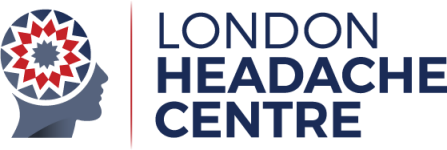Introduction
Chronic daily headache (CDH) is a syndrome, not a diagnosis. It simply means headache on more than 15 days a month, that is, headache more often than not. CDH is incredibly common; epidemiological studies show an overall prevalence of between 2-7% in developed countries, suggesting that in the UK between 1 and 3 million people may be suffering from this condition.
There are a number of primary and secondary headache disorders that can cause chronic daily headache. CDH may evolve from a previously episodic headache disorder, usually migraine, often driven by overuse of acute medication or caffeine, psychological co-morbities such as anxiety or depression, physical conditions such as sleep apnoea, or significant life events. The key technique in making an accurate diagnosis in patients with CDH is to elicit how the headaches began, and what they were like at the outset, particularly as chronic headaches tend to lose their specific features over time.
Medication overuse headache
Medication overuse is extremely common in patients with CDH, as many as 50% fulfilling the diagnostic criteria of chronic headache that has developed or worsened with regular overuse of analgesics: ergots, triptans, opioids, or combination analgesics more than 10 days/month; simple analgesics on more than 15 days/month. Worldwide, the prevalence of medication overuse headache may be between 0.5-1%; this number rises to 60-85% of all new referrals to specialist headache centres. The idea that medication overuse can cause chronic headache has become generally accepted after the publication of studies that show that frequent use of analgesics for non-headache disorders only causes CDH amongst patients with personal or family histories of migraine, and of widespread clinical experience of the improvement that patients can experience simply by undergoing medication withdrawal.
Medication overuse may be driven by various psychological factors, including the natural desire to relieve pain and continue function, the fear of headache, obsessional drug-taking behaviours, (rarely) psychological drug dependence, and (most commonly and most difficult to address) the necessity to take painkillers for other pain conditions. Abrupt outpatient withdrawal of analgesics may help reduce chronic headache, but it will only work if these psychological factors are acknowledged, and the patient counselled about their importance.
Medication withdrawal may be very effective. Up to one-third of patients experience a
significant improvement in their headaches, reverting to their previous episodic disorder. A
further one-third of patients experience a reduction in the frequency or severity of their
headaches, and a further one-third experience no improvement. For these patients, however, the process is still important as it not only gives people back control over their headaches, but also allows previously discarded prophylactic treatments to regain their effectiveness.
Primary chronic headache disorders
Patients who have successfully dealt with medication overuse may be left with chronic headaches. The nature of these headaches may be clearer once they are not taking analgesics regularly: the commonest primary diagnosis is chronic migraine, but cases of chronic cluster headache, hemicrania continua, and chronic paroxysmal hemicrania may emerge from previously unclassifiable chronic headaches.
Chronic migraine may be treated with a wide selection of prophylactic treatments, including
tricyclic antidepressants, beta-blockers, anti-epileptics, and Botox. Chronic cluster headache
may respond to verapamil, topiramate, lithium, methysergide, or melatonin. Chronic
paroxysmal hemicrania or hemicrania continua should respond to indometacin. All chronic trigeminal autonomic cephalgias may respond to occipital nerve stimulation.
New daily persistent headache
In the last 15-20 years a new category of headache disorders has been recognised. These are the new daily persistent headaches, that is, headaches simply starting one day and not going away. Some patients have a pre-existing headache disorder, but the cardinal feature of new daily persistent headache (NDPH) is that it emerges de novo without any sense that it has evolved out of a previous disorder. Recognising NDPH is important as within this category one may find some of the serious causes of headaches that most concern patients, GPs, and headache specialists. Many of the headache disorders that come under this heading need specific treatments.
Conclusion
CDH is a common problem in general practice, general neurology clinics, and specialist
headache clinics. Although CDH is often challenging to deal with, accuracy in diagnosis and
perseverance in treatment can lead to significant improvements in virtually all cases.
